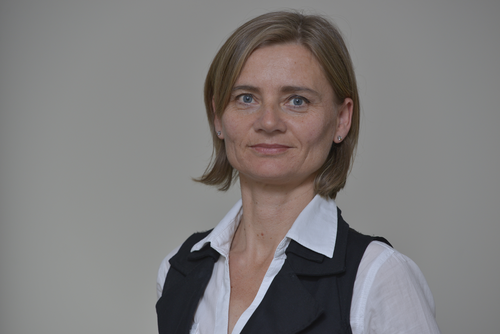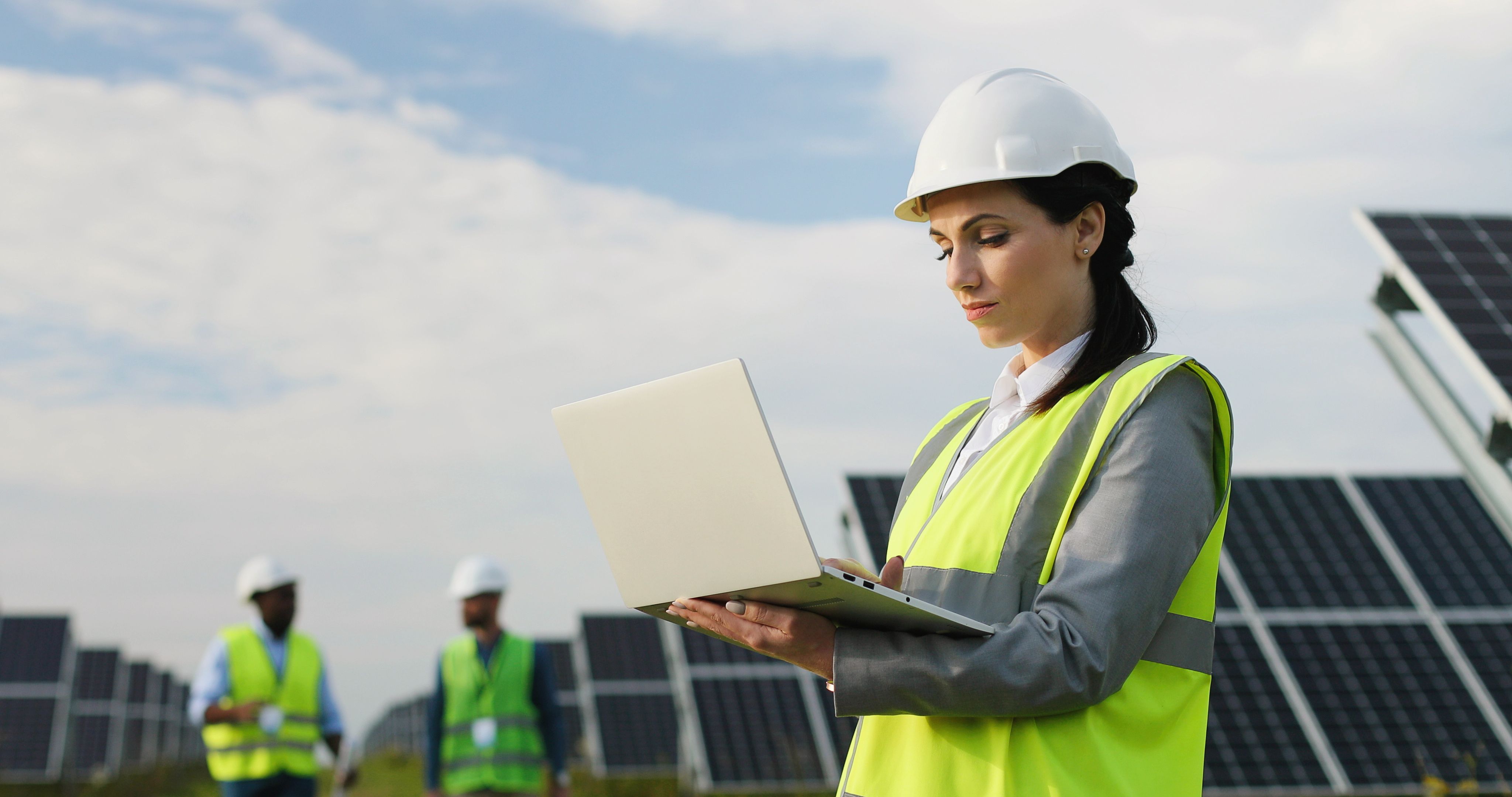Half of the world is female – this is not reflected in the workforce of the energy sector, which remains one of the least gender-diverse sectors. The energy sector is an especially male-dominated sector with only 22% of its workforce being women. The expansion and diversification of the sector through the energy transition has raised hopes for more gender diversity in the sector. The Energy Partnership supports women working in the field and is committed to a gender transformative approach throughout its activities.
Where are the women?
The energy sector remains an especially unequal employment sector globally, in Germany, as well as in Jordan. Internationally, women constitute 22 percent of the workforce in the energy sector overall. The renewable energy sector exceeds this ratio by 10 percentage points, although most women work in administrative jobs. In their report on the gender-energy nexus, IRENA points out the near absence of women in managerial and technical positions overall. Nevertheless, renewable energy and energy efficiency, as fairly new sectors, still bear the potential to equalise gender relations in terms of decision-making, labour force participation, entrepreneurship, and energy consumption.
In Germany about 20 – 25 percent of the sector’s workforce are women. Women continue to be underrepresented in supervisory boards, managerial positions, and university chairs that make up Germany’s energy sector. In 2017, for example, women only made up six percent of Germany’s top 50 energy companies’ supervisory boards (Kemfert & Egerer, 2017). A 30 percent quota for women in supervisory boards of publicly listed companies was introduced in 2015. In Jordan, according to the Energy Sector Green Growth National Action Plan 2021-2025, only about 18 percent of clean technology jobs are held by women despite them outpacing men in university enrolment.
Both Germany and Jordan lack concrete gender data for their respective markets – an issue the Energy Partnership is currently tackling together with the Jordanian Ministry of Energy and Mineral Resources.
A just energy transition needs women
To quote the United Nations Sustainable Development Goal 5, Gender equality is not only a fundamental human right but a necessary foundation for a peaceful, prosperous and sustainable world. Aside from the obvious development objective to enhance gender equality, women are also needed to transform the energy sector in a broader way. Women’s participation in the energy transition is likely to make it a fairer, more inclusive, and a more sustainable process.
Meeting international environmental and developmental targets, as well as national security goals will require large, structural changes in our energy systems. Inventing, implementing, and then operating these measures – be it technical or regulatory – requires deeper experience pools. In their 2021 Annual Review of Renewable Energy and Jobs, the International Labour Organisation (ILO) and the International Renewable Energy Agency (IRENA) announced that employment in the renewable energy employment sector reached 12 million jobs globally. It is estimated that 42 million people will be employed in the renewable energy sector by 2050 (IRENA).
However, it is not only mere “manpower” that is needed. Research has shown that diversity, and specifically the inclusion of women as decision-makers, adds value to companies. Women have been shown to be affected differently by policy decisions in the energy sector and following socio-economic and environmental knock-on effects (UN Women 2019). Policies should therefore aim to support the contributions of women in the energy sector and enable them to share their skills and expertise in the workforce.
Overall, economies have been shown to grow with increasing participation of women in the labour market. PwC, for example, estimates that “increasing female employment rates across the OECD could boost OECD Gross Domestic Product (GDP) by US$6 trillion, while closing the gender pay gap could boost OECD GDP by US$2 trillion”. A study by the International Finance Cooperation strongly suggests that these global findings apply equally in Jordan.
Why are women not part of the sector?
Women’s low participation in the energy sector is a real and eminent problem. However, what is less easy to determine are the causes and subsequent solutions for the issue. In its analysis of the gender gap in the renewable energy sector, a study by IRENA groups barriers into two categories: barriers to entry and barriers to career advancement. According to the report, the former is predominantly related to the perception of gender roles as well as cultural and societal norms, which subsequently also inform hiring practices. These gender stereotypes hinder women from an early age. They prevent girls from considering STEM (Science, Technology, Engineering, and Mathematics) subjects in school, continuing to influence their career choices. Congruent to these self-imposed barriers, teachers, families, colleagues, and hiring managers are similarly influenced by stereotypical thinking and unconscious bias.
However, entering the energy sector is only the first barrier for women, who continue to face challenges when advancing their careers. IRENA’s report suggests that cultural and social norms, a lack of workplace flexibility for mothers and the lack of mentorship opportunities are the key reasons why women often leave work at key points of their careers.
Recommendations
The barriers preventing many women from succeeding in the energy sector are multifold – so must be the measures to overcome barriers and enhance women’s participation in the energy sector. The IRENA report makes the following policy recommendations:
- Mainstreaming gender perspectives through training and awareness raising
- Creating supportive networks and mentorship programmes for women
- Improving access to education and training for women and underrepresented groups
- Establishing gender targets and quotas in the public and private sectors
- Implementing measures to favour a better work-life balance to allow women to remain in the sector during motherhood
- Developing appropriate workplace policies and regulations to prevent unequal representation and remuneration
The Jordanian-German Energy Partnership, like all bilateral Energy Partnerships of the German Federal Government, reflects these recommendations in its projects, adapting them to its respective circumstances.
What we do in the sector
- Gender Benchmark study to assess the current status quo of women in the Jordanian energy sector. This study will subsequently also develop a set of recommendations for a gender strategy for the Jordanian energy sector.
- Cooperation with Nashmyat Altaqa. The Energy Partnership supports the project in its endeavour to support recent graduates of energy engineering, girls in STEM and advocacy.
- Participation in the Energizing Women to Advance the Energy Transition mentorship programme with the Global Women’s Network for the Energy Transition (GWNET). Twelve Energy Partnerships have joined with GWNET to develop and implement a high-level mentorship programme.
- All German bilateral Energy Partnerships contribute to the Women Energize Women Campaign. The campaign highlights women pioneers in the energy sector on social media and will also organise an international conference on the topic.
- Organizing a gathering event in co-operation with GWNET to celebrate the Jordanian mentees on International Women’s Day 2022, receiving their feedback and perspectives regarding the mentoring programme.



